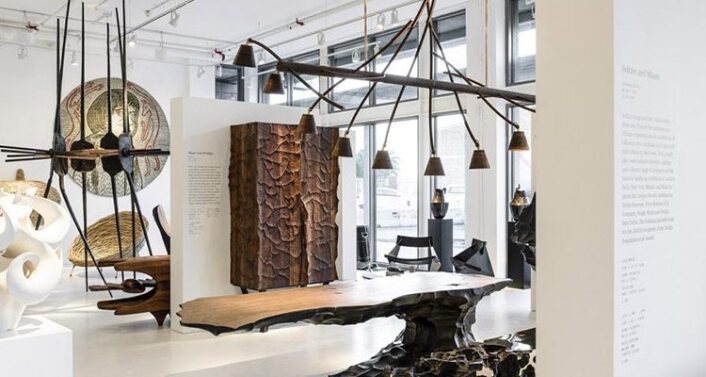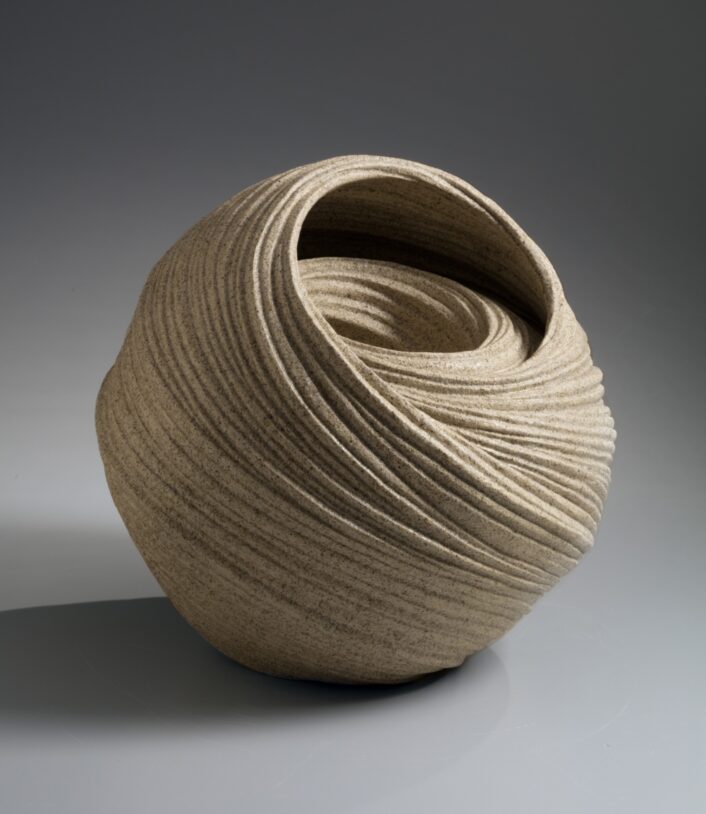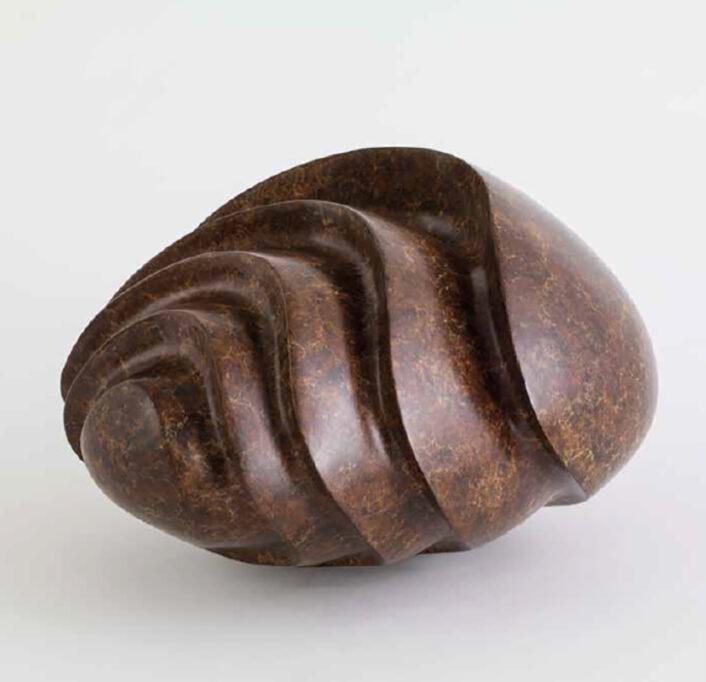Fine Art
Andile Dyalvane

Dyalvane is represented by the South African Southern Guild.
Image courtesy of: Business Day Wanted
Currently, Andile Dyalvane is considered one of South Africa’s foremost ceramic artists. Dyalvane was born in Ngobozana, a small village in the Eastern Cape province of South Africa. As a youngster, rather than playing games in the river, Dyalvane could be found digging for clay and making objects out of the bountiful material. He received a National Degree in Art and Design from Sivuyile Technical College in 1999 and a National Degree in Ceramic Design from Nelson Mandela Metropolitan University in 2003.
Dyalvane is proud of being South African and this is something that is reflected in his work at each and every opportunity. Through his art, he is able to engage and respond to his cultural heritage. Specifically, clay offers Dyalvane the opportunity to create pieces that are both beautiful and functional.
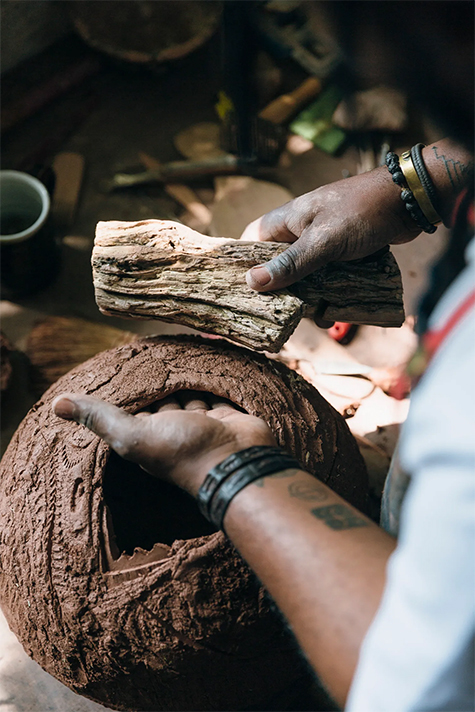
In addition to his cultural heritage, Dyalvane also draws inspiration from his surroundings.
Image courtesy of: House and Garden
Each project starts with a line… (courtesy of Business Day Daily), “a simple line that connects him to the past, celebrates the present, and reminds him of his responsibility to leave a legacy for the next generation.” Perhaps this is tied into the artist’s deep connection to his Xhosa ancestors?
This “line” represents “camagu,” gratitude as translated from isiXhosa. Dyalvane believes that this connection to his linage is infinite. The sculptor notes, “The pattern and rhythm, the controlled chaos, depicting the mastery of doing something again and again.”
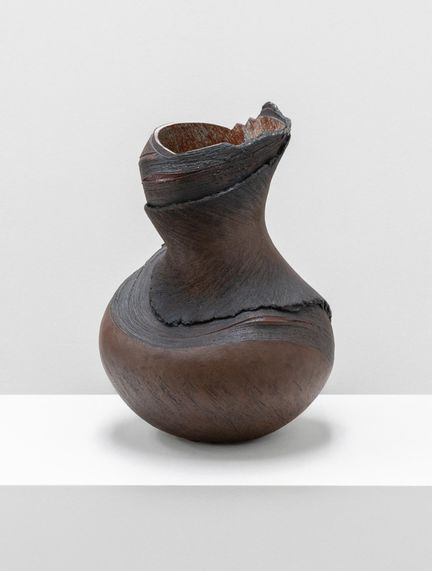
“Cornish Wall,” 2019. Glazed stoneware.
Image courtesy of: Loewe Foundation Craft Prize
Along with fellow ceramicist Zizipho Poswa, Dyalvane runs Imiso Ceramics. It is at this studio/shop that the artist pushes the boundaries of material and application. Using memories and images from his rural upbringing and urban, cosmopolitan adulthood, Dyalvane designs and produces pieces that are adorned with abstract designs and human figures. Each marking and every color has a distinct meaning.
In English, Imiso means “tomorrows…” as such, the studio produces bespoke, handmade, collectable artifacts that allow Dyalvane to experiment with and combine a wide range of different materials and techniques. Materials such as glass and wood are often combined with the ceramics to produce an end-product that is a functional work.
Every color and mark on Dyalvane’s skillfully crafted pieces has meaning. His “Scarified” collection, for example, is inspired by the traditional Xhosa practice of scarification (ukuqatshulwa). Treating clay like skin, Dyalvane incises the surfaces of the vessels in this collection with lines and patterned marks, evoking and celebrating the beauty of the patterned bodies of his youth.
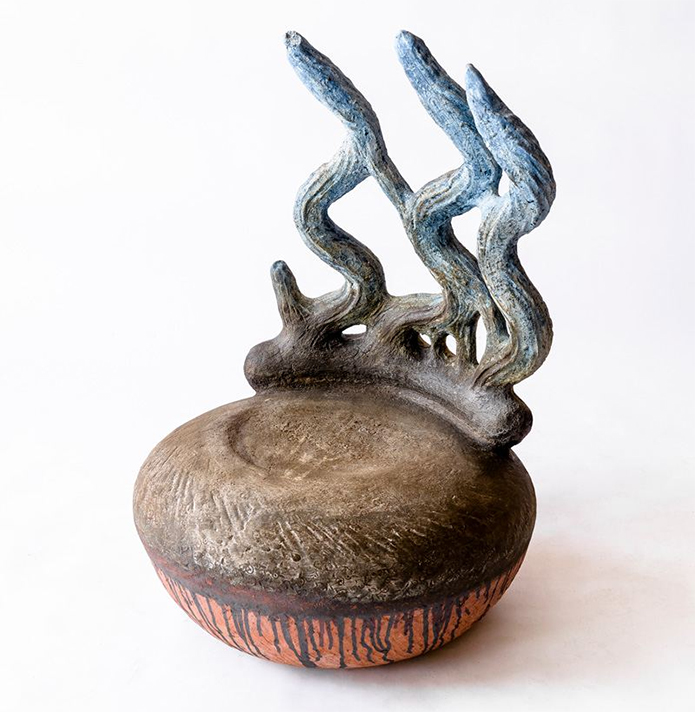
“iMpepho”
Visions for Dyalvane’s 2021 show in New York City came to the artist during the pandemic.
Image courtesy of: Galerie Magazine, photographed by: Adriaan Louw
There is a phenomenon in the Xhosa community that Dyalvane subscribes to; it is called “ancestral dreamscape.” This refers to the belief that messages are being sent to the present by forebears. Oftentimes, Dyalvane says that (courtesy of Galerie Magazine), “They channel these symbols to me as a vessel to realize and bring others into the fold.” This, along with the artist’s powerful commitment to his role as a “communicator of inherited wisdom” are factors that influence his work.
These visions do not come to Dyalvane when he is sleeping; rather, they overwhelm his peripheral when he is awake-walking or talking. The 2021 exhibition at New York City’s Friedman Benda Gallery shed addition light on the meaning behind Dyalvane’s pieces. Titled iThong, the collection of sculptural ceramic seating references the medium through which messages are transmitted from ancestors. In many Xhosa ceremonial gatherings, these sculptural seating pieces are placed in a circular arrangement around a fire. Each object is based upon a single pictogram from more than 200 symbols that Dyalvane has created. Each symbol is an important word in everyday Xhosa life (courtesy of Design Boom) “taking their inspiration from both dyalvane’s personal memories and various african artefacts, the seating objects sit close to the earth, as the ground is revered as an ancient portal for ancestral communion.”
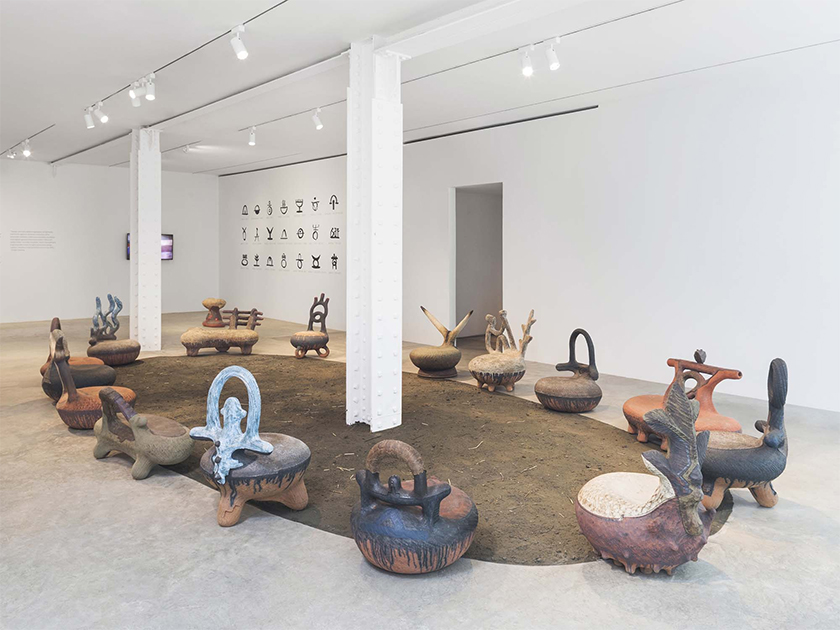
“Andile Dyalvane: Ithongo,” installation view at Friedman Benda, New York, 2021
Image courtesy of: Friedman Benda
Dyalvane uses traditional coiling techniques to create his clay sculptural seats. The seats are either rounded at the base or spherical and then the backrests are shaped into any number of symbols from his dreams. Low to the ground, the seats are reminiscent of traditional seats that were portals for ancestral communication.
Courtesy of Dezeen, Dyalvane explained “We are constantly energising both the past and future through our present actions. To believe that keys of trust in one’s value, purpose and time exists in all – past, present and future – helps us to engage with great ways of understanding our spirits in these spaces.”
